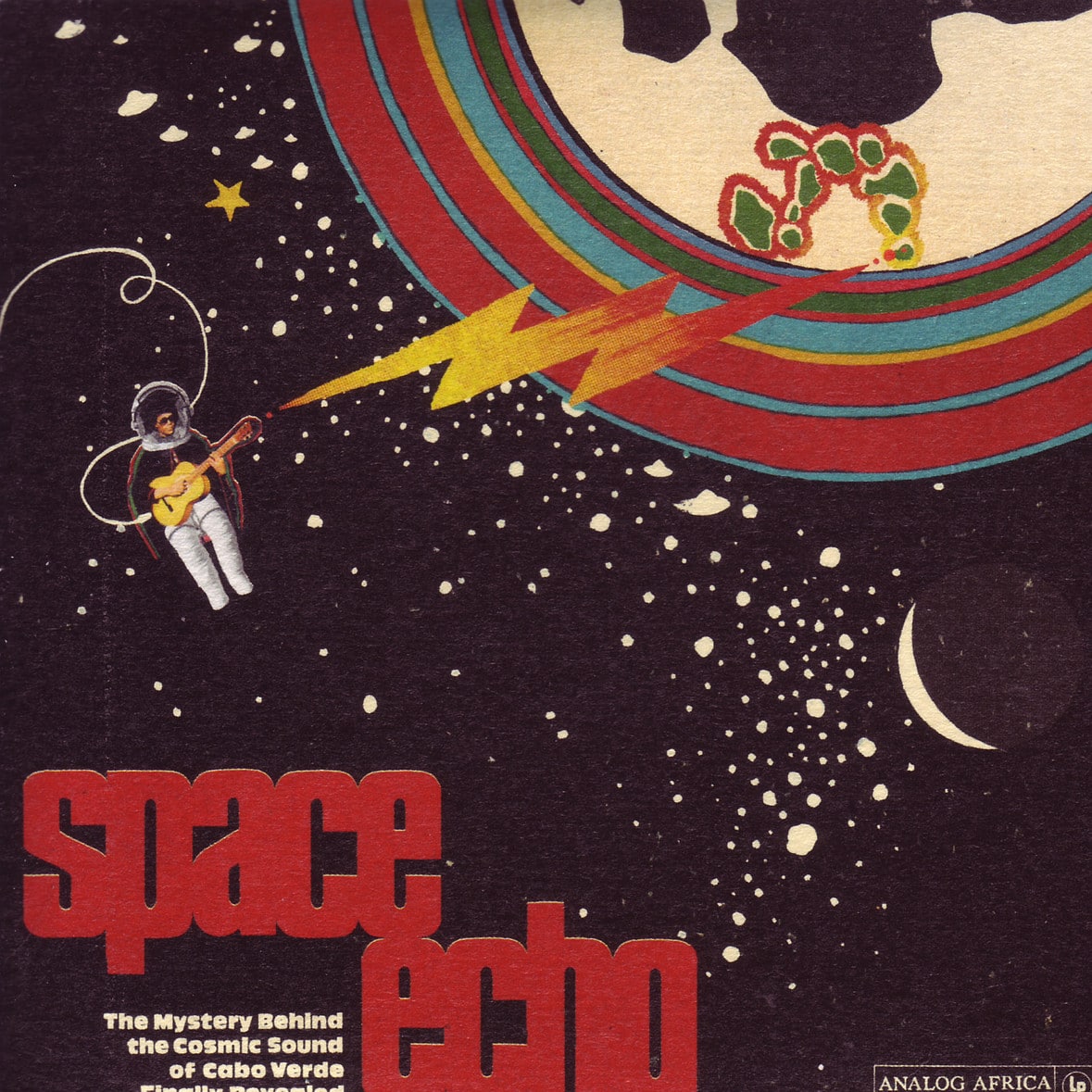The Article
The Mystery Behind the Cosmic Sound of Cape Verde Finally Revealed: Space Echo
24th July 2016

Title: The Mystery Behind the Cosmic Sound of Cape Verde Finally Revealed
Label: Analog Africa
Yes, that’s right, this is a compilation of grooves from Cape Verde and its oddly intriguing synth explorations. An island nation 350 miles of the west coast of Africa, it was utilised as an overseas department by the Portuguese in 1951, later attaining independence in 1975. Inherently, the country runs under the grooves of Funana (banned by the Portuguese colonialists who thought it was a bit too risqué for their civilised tastes), Mornas and Coladeras.
Why the synth connection, then?
Mainly because of a 1968 shipment that was packed with kit from the likes of Korg, Moog, Farfisa, Hammond and Rhodes which was on the way to Rio de Janeiro to be shown at an electronic exhibition with a view to future South American sales. The ship left Baltimore on 20 March and, oddly enough, never arrived. Hmmm.
Now imagine that you wake up in a village such as Sao Nicolau or even Cachaca which are both 8km from any coastline and there, in your midst…is a ship. And what are inside the containers? You guessed it. Useless, though. This was an area with no electricity, after all.
Everyone thought that the ship had fallen from the sky. Well, you would, wouldn’t you? Others said, “Come on, please be serious about this.” and drafted in a host of physicists and scientists who studied the problem and decided that…the ship had fallen from the sky. Possibly because of the enormous crater underneath the field that supported the ship. Then someone found cosmic particles on the hull while the bow of the ship exhibited evidence of extreme heat, such as a meteor might exhibit as it passes through the hemisphere, falling to earth. But then, if the ship had fallen to earth in such a way, it would not have remained in one piece?
While heads were continually scratched, the synths were stored in the church and everyone believed that the answers would be found during that Sunday’s Mass.
The anti-colonial leader Amilcar Cabral decided to distribute the instruments in those schools that had electricity. Curious children started playing with them. Creativity occurred and it was said that any child who came into contact with these mysterious instruments inherited amazing musical capabilities
The result? A crazy combination of salsa-type rhythms that combine sometimes light, bouncy guitars and sometimes deep Woodstock-type psychedelic riffs with synth runs and noodles that combine to create a sort of exploitative B-movie soundtrack from the likes of Os Apolos, Bana, Dionisio Maio and Abel Lima.
This almost unimaginable conglomeration of cultures is made more interesting because the ‘new’ technology arrived without any further guidance on their use and encouragement regarding any recognisable style. Hence, what we have here is a culture that is completely cut off from the ‘normal’ synth-based scene and standard influences. After all, the UK synth scene was quickly awash with German influences, for example. Everyone sounded like Kraftwerk for a time. You just don’t get that here. The Cape Verde culture produced its own, unique, take on synths and how they should be used and integrated into the traditional music culture.


